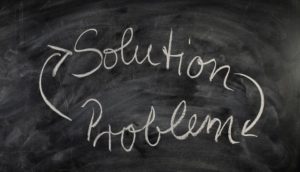Last updated on July 5, 2017

Introduction
It is a common issue for startups applying customer development to discover many customer problems and either relating to that or to their vision include many, many features in their product development roadmap. However, as we know, it is not about the number of features but their quality, i.e. usefulness in solving the customer pain points.
Why is this important?
Having too many features introduces several problems: feature creep for end-users, loss of time and money, etc. One can perceive it as a form of premature scaling, but it is also has negative marketing consequences for positioning and differentiation: what is the startup all about? Too many features can easily cloud the answer. In brief, too many features pose a problem for both the end-user and the startup’s internal operations.
How to address the issue?
Well, it can be framed as ‘feature priority problem’, i.e. what features should the startup focus on. Say you are a “dance app startup”. Based on a prior assumptions and perhaps some customer development activities, you have defined a set of features reflecting what customers want. This set includes:
- buy dance event tickets
- get notifications on dance events
- see dance events in map
- get driving directions to events
- learn to dance better (dancing instructions, videos)
- search dance partner
You could focus on developing all these features, but according to the above logic, it makes more sense to choose the most relevant ones and solve them. If one problem is large enough, solving only that one would be enough to provide real value.
So, how do you determine which features are more important than others – i.e. how do you prioritize? It’s a very simple process:
- Tie them to problems (e.g., “I always miss the interesting dance events in my city” –> Get notifications on dance events).
- Prioritize problems through customer development (rank-order questions, customer understanding, relative solution gap).
- Thus, you have the features prioritized as well.
The customer development activities should therefore focus on setting the problems (and thus features) in order of preference from customer perspective. The more problems there are, the more useful it is to rank them. You can directly ask customers to rank the presented problems. You can also form a general understanding of the magnitude of different problems by interviewing customers.
Finally, ‘relative solution gap’ refers to the ratio between the magnitude of the problem and competing solutions effectiveness in solving it. The ideal would be a combination of MAGNITUDE: high, EFFECTIVENESS OF COMPETING SOLUTIONS: low. The least feasible problem to solve, according to this logic would be where the perceived magnitude (rank) of the problem is low and, moreover, extant solutions are effective in solving it.
Conclusion
To avoid feature creep, startups should prioritize their customer’s problems and associated solutions. Based on this, they are able to create a “market-oriented” product development roadmap.